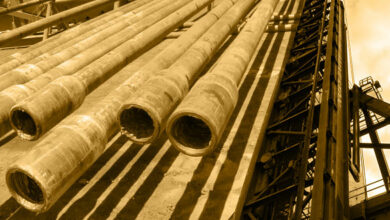Activity rebound puts workforce challenge back at center stage
By Linda Hsieh, Editor & Publisher
Speaking with industry executives from drilling contractor and E&P companies over the past couple of months for our annual “Critical Issues in Drilling & Completions” Q&A’s, it’s apparent that old challenges around recruitment and retention have resurfaced with full force as drilling activity ramped up over the past year.
Companies are feeling the pinch from a critical labor shortage, evident in the increased presence of short-service employees on drilling locations. Both operators and drilling contractors expressed concerned around the potential impacts.
“One competent person cannot be replaced by several less competent individuals. That will only drive up cost, and the quality of the projects will suffer. I think that’s the biggest challenge,” said Tommy Sigmundstad, Senior VP Drilling and Wells for Aker BP.
The labor shortage is not only about the immediate future, however. It’s a long-haul challenge tied both to the public perception of oil and gas, and to the changes that companies are willing to make to attract the next generation. At Nabors, for example, Senior Vice President Subodh Saxena urges companies to think about allocating their capital differently this time than they have in past cycles. Drilling contractors have typically focused on building new rigs when the market picks up, but that strategy leans too much toward achieving short-term gains instead of long-term sustainability.
In terms of addressing the workforce challenge, more investments need to go into improving safety and the general well-being of employees, he said. “Today’s workforce is very much willing and capable to work hard for their 12-hour shifts, but when they are off, they want a reasonable quality of living. At a minimum, this means employers need to provide some element of privacy in the living quarters, as well as WiFi. Those investments need to happen. If we don’t do that, we will not be able to attract and retain those employees because they see those things as necessities, not luxuries.”
Differentiating with digital
The industry also continues to push ahead in its automation and digitalization journey. As in recent years, operators we interviewed this time – Petrobras, Petronas, Pioneer Natural Resources and Aker BP – all cited this as a key strategy for cost reduction and efficiency improvement. And the drilling contractors we talked to – H&P, Nabors and Seadrill – are all working on finding new ways to leverage digital innovations; they see this is the next frontier for differentiation among the competition.
This means that upskilling rig crews and drillers will be critical, as automation systems gradually take over repetitive tasks and manual labor. “Going forward, it’s going to be less about big muscles and more about big minds,” said Simon Johnson, President and CEO of Seadrill.
Another common thread this year is around the need for more collaboration between operator and drilling contractor. While supply chain bottlenecks and inflation are global issues outside of any one company’s sphere of control, leaders say their impacts can be mitigated when companies work together to plan ahead.
“Communication and transparency are paramount, and that involves having conversations early and often,” said Bonnie Black, VP Drilling at Pioneer. “If there is potential for our plans to change, we communicate that with them. At the same time, if our vendors are having challenges around supply chain or labor, there is enough trust in our relationship that they can tell us upfront, and we can try to solve those issues together as early as possible.” DC
Linda Hsieh can be reached at linda.hsieh@iadc.org.




